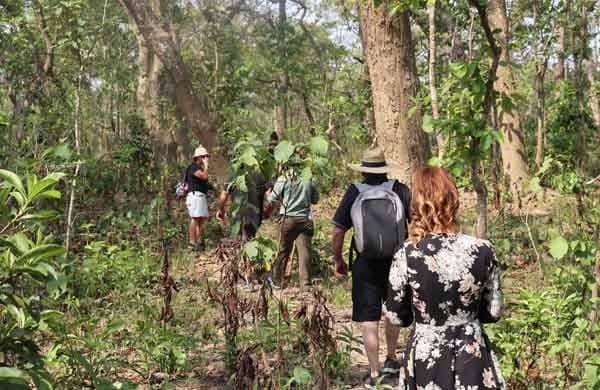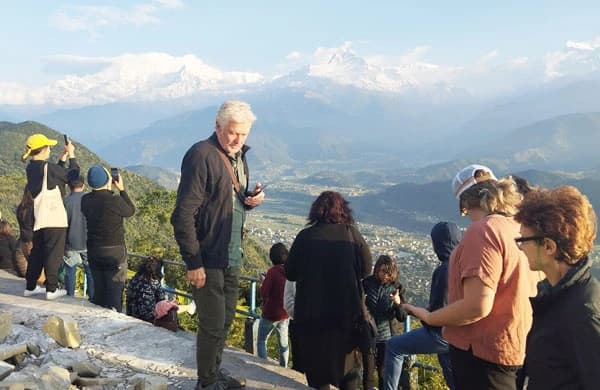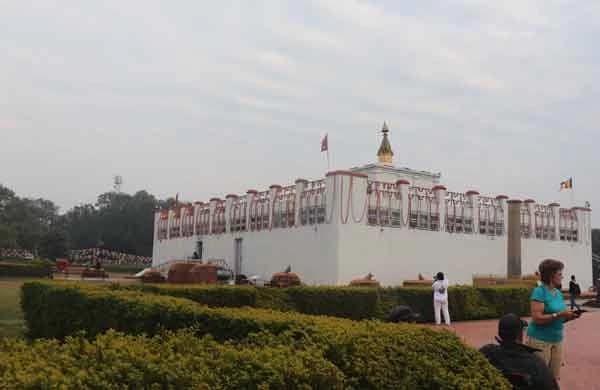Introduction to theTsum Valley Trek- 18 Days : A Hidden Himalayan Escape
Tsum Valley Trek is rugged, off-the-grid, and full of thrilling moments that’ll push your limits and reward your curiosity. It is perfect for seasoned trekkers who are up for a deeper, more slow-paced trek in the Himalayas. Situated in the remote northeast of the Manaslu region, Tsum Valley Adventure offers a rare opportunity to explore a sacred valley that was off-limits to visitors until 2008.
Tsum Valley is an entirely different world from the popular trails at Everest and Annapurna. You walk through timeless villages, meet the warm-hearted Tsumbas (Tibetan descendants), and engage in a culture based on Tibetan Buddhism. You walk by ancient monasteries, Mu Gompa, DhephuDoma, Gumba Lungdang, along with nunneries, colorful chortens, and prayer flags along the way.
As Tsum Valley is a restricted area inside the Manaslu Conservation Area, you will need to trek in a group of at least two with a certified local guide and obtain special permits. Despite being just 8-9 hours from Kathmandu, the valley feels worlds away. You will stay in simple but cozy teahouses, hike through stunning terrain, and enjoy peaceful overnights in villages like Chumling, Chhokangparo, Nile, and Gumba Lungdang. A side hike to Ganesh Himal Base Camp makes the trek even more adventurous and allows you to experience stunning high-mountain scenery.
What makes this 18-day Tsum Valley Trek unique is that there are no crowds, no tourists, no buzzing trails, and simply just you, the mountains, and hundreds of years of traditions taking place around you. This trek allows for reflection and rewards every step with quiet magic.
So, if you don't mind trading hot showers and fancy cafes with mountain tea houses, spiritual vibes, and pure, unfiltered beauty, our Tsum Valley trek for 18 days is ideal!
Top Highlights of Tsum Valley Trekking - 18 Days
- Step into a Hidden Shangri-La as you trek through the mystical Tsum Valley, a secret slice of paradise tucked inside the restricted Manaslu region.
- Follow ancient trails lined with centuries-old monasteries, sacred meditation caves, and massive mani walls, whispering stories of Himalayan sages and monks.
- Walk the untouched, unspoiled, and beautifully peaceful trail, there is no tourist rush, just nature and you.
- Hike through rhododendron forests and meadows while spotting alpine animals and unique Himalayan plants.
- Experience the region’s rich Tibetan Buddhist influence with prayer flags, chortens, and a spiritual atmosphere close to the Tibetan border.
- Witness panoramic mountain vistas, hidden waterfalls, and backdrops that’ll make your camera work overtime.
- Enjoy your stay in local homes and cozy teahouses, where hosts serve Daal Bhaat with smiles and stories.
- Take a side hike to the Ganesh Himal Base Camp, a rewarding trail with glaciers and high-altitude views.
What to expect and experience on Tsum Valley Trek - 18 Days
During the Tsum Valley trekking in Nepal, there are many attractions, and we have listed some of the highlights below.
Off-beat and peaceful Tsum Valley trek
Tsum Valley Trek is less-travelled and less-explored trail which means you can enjoy the silence and serenity of the Himalayas even in peak trekking season. There are no crowds just you, nature and the sound of your boots on the trail.
This area has not seen much development since it is so remote and untamed. This is part of the appeal, but it also makes this trek ideal for experienced trekkers who are comfortable in high-altitude terrain and have trekked in the Himalayas before. If that's you, get ready for a profoundly blissful and rewarding experience.
Discover the hidden Shangri-La of Tsum Valley
The 18-day Tsum Valley Trek takes you into a secret Shangri-La, far from the beaten path where time seems to have stood still. Only a few trekkers have heard of the place, making Tsum the best-kept secret.
The valley is raw, pure, and untouched, offering a trekking experience that's truly real. Here, you will find the Tsumbas, the warm and welcoming residents who have kept their Tibetan Buddhist tradition alive for centuries. From ancient monasteries to colorful festivals and everyday rituals, the depth of culture in Tsum Valley will leave you with a lasting memory of its heritage.
Visit ancient monasteries- including the sacred Mu Gompa
One of the most magical parts of the Tsum Valley Trek is visiting its ancient Buddhist monasteries. The trail feels like a living museum of Tibetan Buddhist culture, Scattered with chortens, prayer wheels, mani walls, and stupas. Every main village along the trek has its monastery, but the notable among these are Mu Gompa, Rachen Gompa, Dhephu Doma, and Gumba Lungdang- and yes, you will be visiting most of these on the trek with us!
Among all of them, Mu Gompa is a real gem. Located at a height of 3,510 meters near Nile village, this monastery was founded in 1895 by Lama Sherab Dorje of the Drukpa Kagyu lineage. The hike up is stunning, and once inside, you will find ancient texts, statues, and sacred relics that give a glimpse into centuries of devotion.
Witness stunning mountain panoramas and diverse landscapes
Tsum Valley Trek is an endless string of breathtaking scenery all throughout. Along this less-traveled path, you will be treated to close-up views of towering Himalayan giants like Manaslu (8,163 m), Ganesh Himal (7,422 m), Himalchuli (7,893 m), BoudhaHimal (6,672 m), and ShringiHimal (7,083 m).
It is not just the summits, though. The landscape constantly changes as you gain altitude- from the lush green hill slopes and river valleys deep near MachhaKhola (920 m) to the barren, open meadows and glacier vista near Ganesh Himal Base Camp (4,200 m).
Each day of the 18-day trek through Tsum Valley introduces new terrain, fresh air, and unbelievable views. You will want your camera ready at all times, but don’t forget to pause and soak it all in!
Trek through the Manaslu Conservation Area
Tsum Valley Trek takes you into Nepal's Manaslu Conservation Area, a closed-off region that requires special trekking permits. Fewer tourists means far less crowded, intact environments.
As you hike the trail through the conservation area, you will see landscapes ranging from subtropical forests to alpine meadows. Watch out for a wide variety of flora, wildflowers, birds, and animals that inhabit the area. It is not a trek-it is a walk through one of Nepal's most biologically diverse and carefully preserved areas.
Acclimatize and explore hidden gems on rest days
Like the others, the 18-day Tsum Valley Trek includes two well-planned acclimatizing days, but these are not entirely rest stops! It is your chance to explore more of this Himalayan gem while letting your body adjust to the altitude.
The first acclimatization day is in Nile village, where you will hike up to the stunning Mu Gompa and the serene Doma Gompa in the mountains. On the second rest day, you will go to Gumba Lungdang and then hike up to the Ganesh Himal Base Camp, an exhilarating side trip with glacier scenery and elevation; this trek has an awesome high-altitude vibe.
Stay with local hosts and feel right at home
What makes the Tsum Valley Trek so special is the opportunity to stay in comfortable homestays and traditional teahouses with local families. You are not just building a roof over your head; you are going to experience life in the Himalayas. You will stay and eat with and listen to stories from the warm-hearted Tsumbas, who host you as members of their families. Their simple lifestyle, powerful traditions, and genuine hospitality will stay with you for a long time.
The Tsum Valley experience will be memorable because of these real human connections, in addition to the surreal mountain landscape.
Tsum Valley Trek - 18 - Day Itinerary
The Tsum Valley Trek starts in Kathmandu, with cultural tours of Swayambhunath, Boudhanath, and Durbar Square before driving to SotiKhola. From this point, the trekking continues along the Budhi Gandaki River, passing scenic villages such as MachhaKhola, Jagat, Lokpa, and Chumling.
You will enter the mysterious Tsum Valley through Chhokangparo and trek to the Nile, exploring sacred places such as Milarepa Cave and Mu Gompa, the largest monastery in the area. En route, you will be surrounded by stunning views of Ganesh Himal and Himalchuli; find the detailed day-by-day itinerary on the page below.
Tsum Valley Trek Altitude: How High is the Tsum Valley Trek?
Tsum Valley Trek starts at SotiKhola (700 m) and ascends gently up through MachhaKhola (869 m), Jagat (1,340 m), and Lokpa (2,440 m). Higher up, you reach Chumling (2,386 m), Chhokangparo (3,031 m), and Nile (3,361 m).
Key highlights include Mu Gompa (3,700 m) and Ganesh Himal Base Camp (4,200 m), the highest point. Afterward, the trek retraces down to Lokpa (2,440 m) and MachhaKhola (869 m), finishing back in Kathmandu, look at the detailed itinerary section for daily altitude gain.
Tsum Valley Trekking Route Map
Tsum Valley trek with Outfitter Himalaya begins at Kathmandu and proceeds towards SotiKhola (700 m), where the trek starts. It ascends slowly to MachhaKhola (869 m), Jagat (1,340 m), and Lokpa (2,440 m) before descending into the hidden Tsum Valley. Trekkers pass through breathtaking villages like Chumling (2,386 m), Chhokangparo (3,031 m), and Nile (3,361 m), and the crown jewel is Mu Gompa (3,700 m) and an optional Ganesh Himal Base Camp trek (4,200 m), the highest. After exploring, the trek heads back down to MachhaKhola and on to Kathmandu.
The trek includes a trek along dense forests, valleys, and remote Buddhist villages far from the more populated paths. Ancient monasteries, rural villages, and stunning Himalayan landscapes characterize the route, which offers a deep cultural and visual experience. Outfitter Himalaya provides trekking maps and in-depth information to help you explore this incredible adventure. Look at the trekking route attached to this page for details.
Tsum Valley Trek Distance: How Long is the Tsum Valley Trek?
Each day on the Tsum Valley Trek is 7 to 22 kilometers (4.3 to 13.7 miles) long, and the walking time is 4 to 7 hours. The duration and difficulty are dependent largely on the terrain and altitude, which increase as you ascend higher.
The trek takes you through an excellent series of landscapes, from subtropical rain forests and river valley cascades to alpine grasslands and rugged high-mountain deserts. This diversity not only makes the trek adventurous and rewarding but also gives trekkers a rich and firsthand experience of Nepal's breathtaking natural beauty and remote Himalayan culture.






